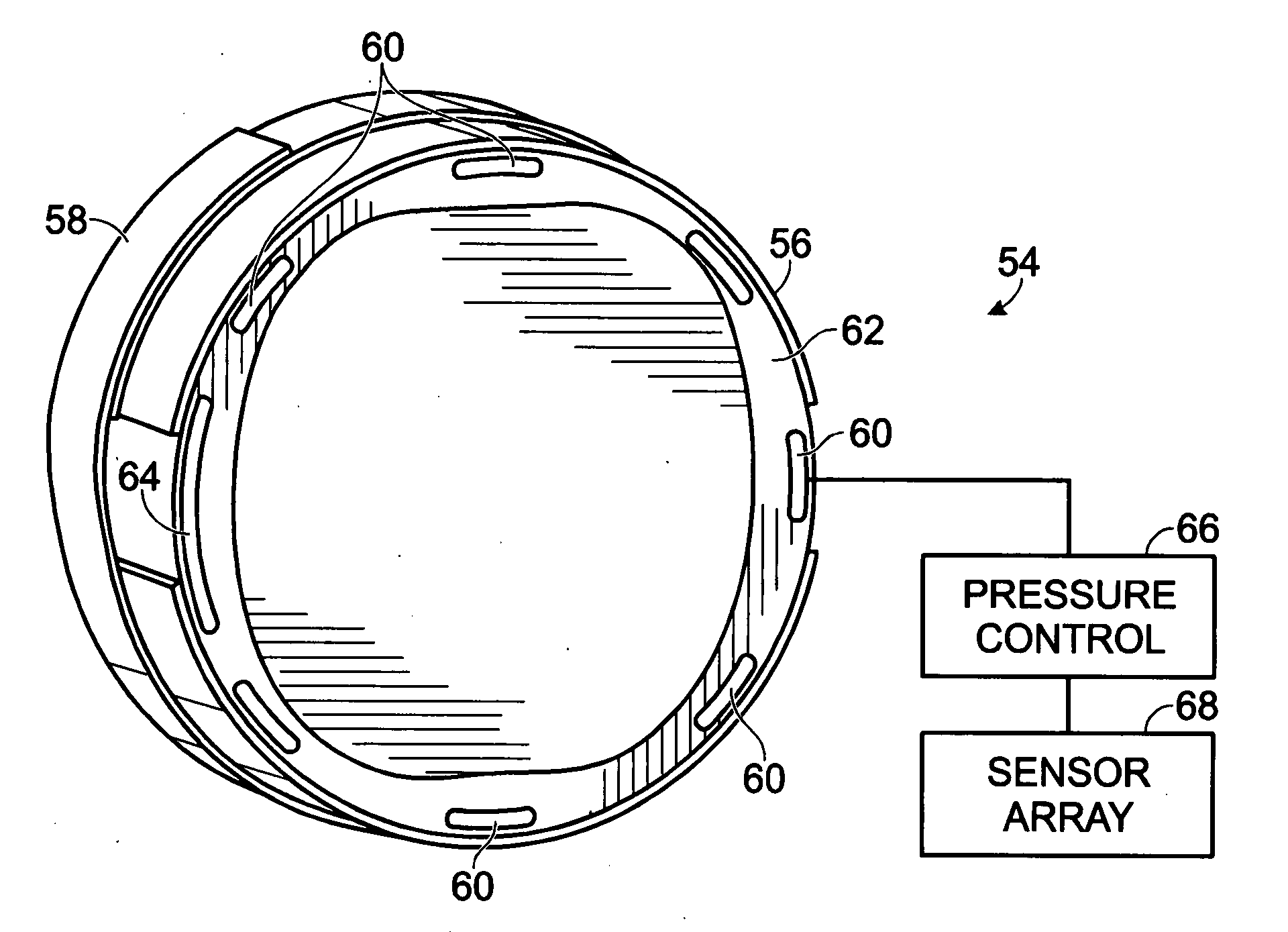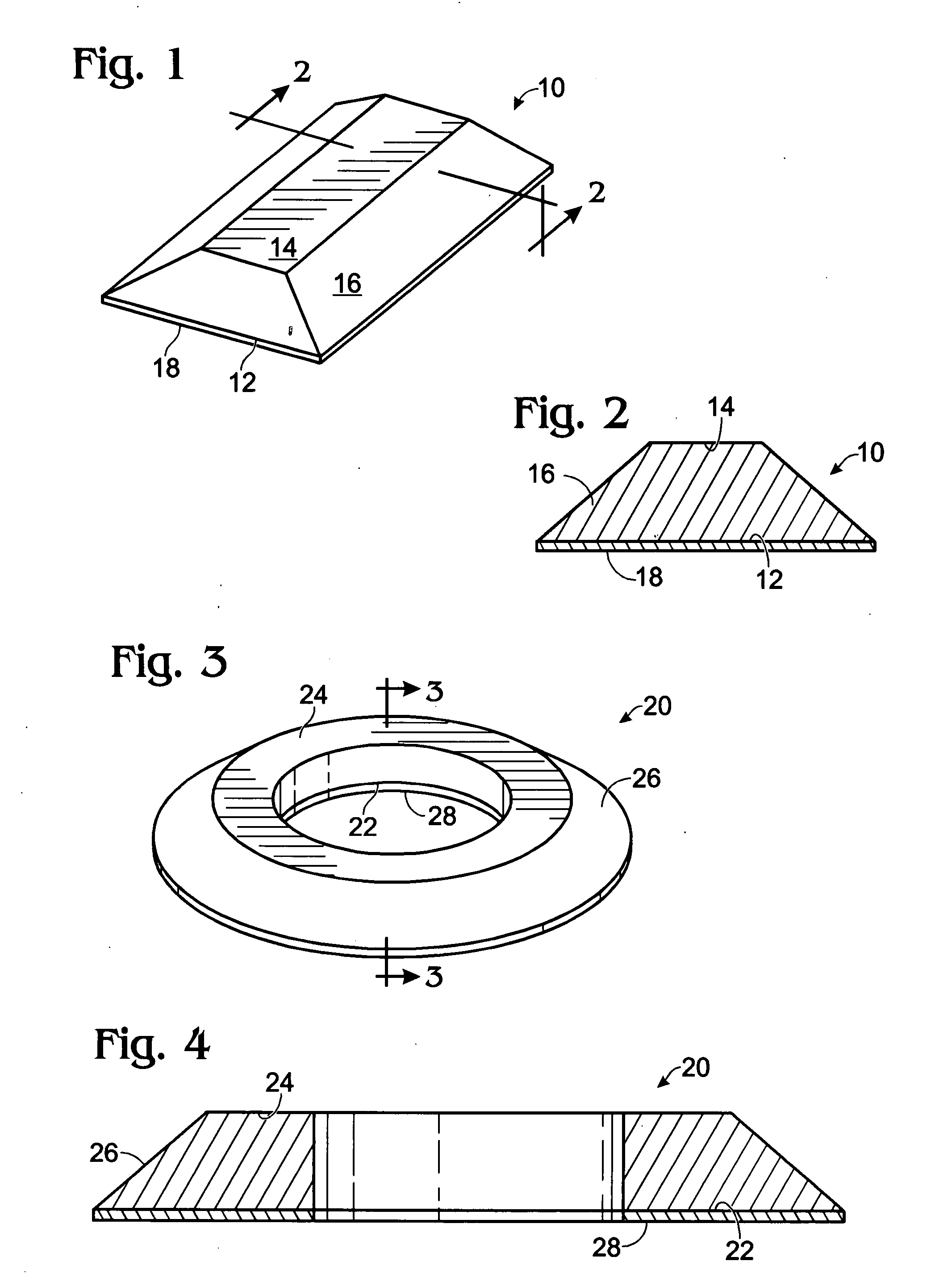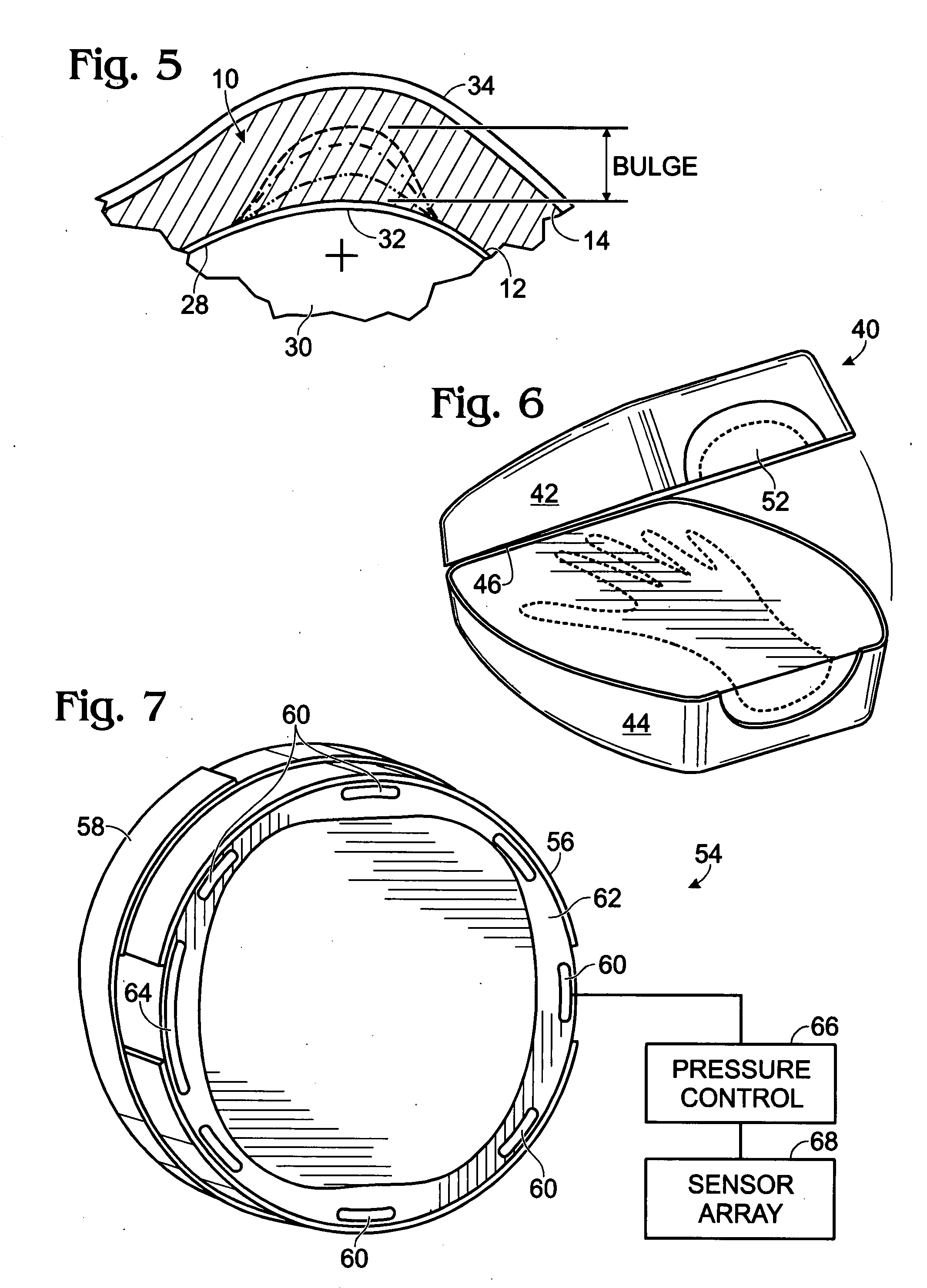Bandaging structure and methodology
- Summary
- Abstract
- Description
- Claims
- Application Information
AI Technical Summary
Benefits of technology
Problems solved by technology
Method used
Image
Examples
example 1
[0040]A knee replacement operation was performed on a patient. Such an operation is a severe intrusion into the body, in which the complete knee joint is replaced by an artificial joint. The access cut that is needed to perform this surgery is about 10 inches long. There is a significant amount of tissue separation involved in this operation as well as other traumatic events taking place at the same time, e.g., to the circulatory system. Fleece was applied to the wound, which was covered by a pressure pad of the invention, and the leg wrapped with an elastic bandage. After two days, a comparison of a patient who was bandaged using conventional techniques was compared to the patient bandaged using the pressure pad structure and methodology of the invention. The evaluation by the attending physician, who had performed the operations, was that there were significant differences between the two patients: (1) when opening the bandaging with the added foam two days after the operation, th...
example 2
[0042]A phlebectomy procedure, the removal of varicose veins, was treated post-operatively using the pressure pad and method of the invention. A sterile fleece provided a catch for blood coming out of the wound. A sterile, self-adhesive foil was applied to fix the fleece in place. A cotton sock, as commonly used with a plaster-cast, was used to cover the leg top-to-bottom as a separation layer under the foam. Then the foam was applied over the affected area of the leg and elastic bandaging applied on top of the foam to provide the needed pressure.
[0043]The comfort for the patient was very good. The pressure pad and method of the invention proved to be very useful, especially when using the CPM system, which is a critical part of rehabilitation following joint replacement, to allow for exercising the joint without muscle flexion / extension by the patient. The compression of the wounded area as well as the rest of the leg was very good. The tissue texture (appearance) for the areas cov...
PUM
 Login to View More
Login to View More Abstract
Description
Claims
Application Information
 Login to View More
Login to View More - R&D
- Intellectual Property
- Life Sciences
- Materials
- Tech Scout
- Unparalleled Data Quality
- Higher Quality Content
- 60% Fewer Hallucinations
Browse by: Latest US Patents, China's latest patents, Technical Efficacy Thesaurus, Application Domain, Technology Topic, Popular Technical Reports.
© 2025 PatSnap. All rights reserved.Legal|Privacy policy|Modern Slavery Act Transparency Statement|Sitemap|About US| Contact US: help@patsnap.com



